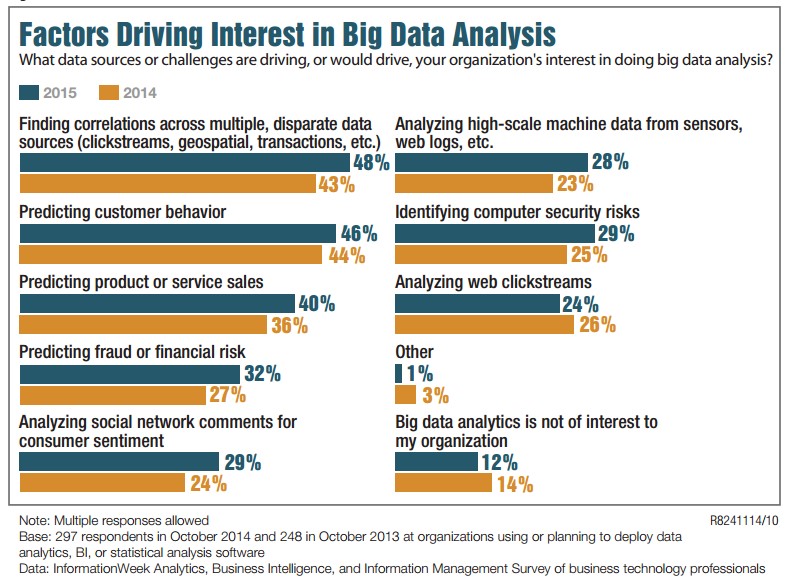Disclosure schedules are an integral part of any merger or acquisition (M&A) transaction. The disclosure schedules contain information required by the acquisition agreement-typically a listing of important contracts, intellectual property, employee information, and other material matters as well as exceptions or qualifications to the detailed representations and warranties of the selling company contained in the acquisition agreement. An incorrect or incomplete disclosure schedule could result in a breach of the acquisition agreement and potentially significant liability to the selling company or its stockholders. Indeed, a well-drafted disclosure schedule will provide substantial protection against post-closing allegations that the selling company breached its representations and warranties.
Because poorly prepared disclosure schedules have the potential for significant liability, it is important that they be compiled carefully and thoroughly. Disclosure schedules prepared at the last minute are likely to be incomplete or inadequate, creating problems to closing a deal or injecting unnecessary risk into the transaction.
Typically, the disclosure schedule process is undertaken by employees of the selling company together with outside M&A legal counsel. But the disclosure schedules can require a significant amount of time to assemble, and the initial drafting should be undertaken early on. It is not uncommon for disclosure schedules to go through a dozen or more drafts and negotiations with the buyer's counsel.
Common Mistakes Made in Preparing the Disclosure Schedules
There are a number of mistakes often made by a selling company in preparing the disclosure schedules. Here is a list of the more common ones:
- The seller fails to include the right employees who have the knowledge necessary to assist in the preparation of the disclosure schedules. Although it is understandable for many reasons why a selling company limits to a very small number of people the group which is aware of a possible deal, that small group frequently does not have access to all the information necessary to complete the disclosure schedules.
- The seller fails to carefully review every sentence of every representation and warranty of the seller in the acquisition agreement, to determine what is required to be disclosed. The language and thresholds for disclosure are extremely important, and will be negotiated between buyer and seller. Ideally, thresholds will be established so that the burden of disclosure is not overwhelming (e.g., requiring disclosure of any contracts over $500,000, as opposed to disclosure of any contracts).
- The capitalization table is incomplete (such as incorrect amounts for stock, warrants, options, etc.).
- The schedule for subsidiaries of the company is incomplete or doesn't list the jurisdiction of incorporation or percentage of the subsidiary owned.
- The list of material contracts is incomplete.
- The description of the material contracts is inadequate (such as including the wrong title of the contract, not listing all amendments to the contract, or not listing the parties to the contract).
- The schedule of leases for the company does not contain all required information (such as title of the lease, landlord, date of lease, location, rent and other payments, security deposit, etc.).
- The intellectual property disclosure is incomplete (such as missing information about patents, trademarks, service marks, domain names, etc.).
- The list of software used in the business (including any open source software) is incomplete.
- The schedule for employees is missing salary, bonus, or other key information.
- The schedules are missing the listing of any employment agreements or officer or director indemnification agreements.
- The schedules on the largest customers or suppliers are missing key data (such as dollar amounts involved or a description of the relationship).
- The disclosure schedule listing any key contracts that have a “change in control” provision is incomplete.
- The disclosure schedule listing all employee benefit plans (medical, dental, vision, life insurance, disability, stock options, bonus plans, ERISA plans, 401(k) plans, PTO plans, etc.) are incomplete or not descriptive enough.
- The disclosure schedule for insurance policies is incomplete (such as missing information on the type of insurance, the carrier, the policy number, the term, the deductible, and the annual premium).
- There is an incomplete schedule of any required disclosures regarding litigation, arbitration, investigation, or other governmental proceedings.
- The schedule of any liens on the company's assets is incomplete (such as failure to list the secured party, what contract it relates to, the date of the contract, and other relevant information).
- The tax disclosure schedule is incomplete (such as failing to disclose all income tax jurisdictions the company is subject to, any pending or past tax audits, any delinquent tax returns, or any unpaid tax liability).
- The disclosure schedule for bank accounts is incomplete (such as missing information about the type of account, the account number, the bank, and the authorized signatories).
- There are incomplete financial statements or liability disclosure, which are required by the seller's financial representations and warranties.
See also: 22 Mistakes Made by Sellers in M&A Transactions
Tips to Make the Preparation of the Disclosure Schedules Less Burdensome
Given that disclosure schedules are so important but yet so time consuming to prepare, here are a few tips based on my experience:
- The seller has to start preparing the disclosure schedules very early on in a deal, even before the acquisition agreement is finalized. At the end of this article, I link to a template that the seller can start with, and then modify as the acquisition agreement is finalized.
- Management team of the seller has to be alerted as to the high importance of the disclosure schedules.
- Key knowledgeable employees within the seller have to be involved in the preparation of the schedules.
- The disclosures need to be coordinated and tied in to what is contained in the seller's online data room.
- Over-disclosure tends to be better than under-disclosure, but this has to be tempered with an understanding of the likely reaction to a disclosure from the buyer.
- Every new redlined draft of the acquisition agreement must be circulated to the parties involved in preparation of the disclosure schedules, so that they can make appropriate modifications.
- The seller must be cognizant of developments in the business that may require updates to the disclosure schedules (such as new contracts, new litigation, new intellectual property developed, etc.).
- The seller's M&A counsel has to qualify as much as reasonably practical the representations and warranties of the seller in the acquisition agreement by “materiality” and “knowledge” qualifiers, so as to make the disclosure schedules less problematic to prepare.
- The seller's M&A counsel also should endeavor to limit disclosures to lists of documents or matters rather than descriptions of the contents of documents or matters (such as requiring a list of pending litigation rather than a description of each pending lawsuit); again, this approach lessens the work involved in preparing the disclosure schedules.
Sample Template of Disclosure Schedules
Below is a link to a sample template of disclosure schedules that will often be required for an M&A transaction. Note that the exact scope and language of the schedules can be subject to extensive negotiation, and thus the final form of the disclosure schedules will often vary significantly from what is contained below. But this is a good starting point for the seller's employees to prepare the first draft of the disclosure schedules. The disclaimers at the beginning of the disclosure schedules are important.
> Download free Disclosure Schedule template (Word document)
Copyright © by Richard D. Harroch. All Rights Reserved. Many thanks to Richard Smith, an M&A partner at Orrick, Herrington & Sutfcliffe, for his helpful input into this article.
Richard D. Harroch is a Managing Director and Global Head of M&A at VantagePoint Capital Partners, a large venture capital fund in the San Francisco area. His focus is on investing in Internet and digital media companies, and he was the founder of several Internet companies. His articles have appeared online in Forbes, Fortune, MSN, Yahoo, FoxBusiness, and AllBusiness.com. Richard is the author of several books on startups and entrepreneurship as well as the co-author of Poker for Dummies and a Wall Street Journal-bestselling book on small business. He was also a corporate partner at the law firm of Orrick, Herrington & Sutcliffe, with experience in startups, mergers and acquisitions, strategic alliances, and venture capital.
The post The Importance of Disclosure Schedules in Mergers and Acquisitions appeared first on AllBusiness.com
The post The Importance of Disclosure Schedules in Mergers and Acquisitions appeared first on AllBusiness.com. Click for more information about Richard Harroch.
 Video is an effective way to increase your customer loyalty on social media. It brings out your personality much more than a photo or text can. There's also more nuance and feeling in a video, and you can even leave people with a smile. It breaks the redundancy of content-driven posts and creates more energy and excitement for your feed. This helps followers feel more connected to you and your brand. -
Video is an effective way to increase your customer loyalty on social media. It brings out your personality much more than a photo or text can. There's also more nuance and feeling in a video, and you can even leave people with a smile. It breaks the redundancy of content-driven posts and creates more energy and excitement for your feed. This helps followers feel more connected to you and your brand. - Social media is an opportunity to create a compelling story that your audience can become emotionally invested in, beyond their need for the product or service. Take consumers along for your brand's journey and make the experience interactive so that they have a say and feel like they are a part of the brand's success. -
Social media is an opportunity to create a compelling story that your audience can become emotionally invested in, beyond their need for the product or service. Take consumers along for your brand's journey and make the experience interactive so that they have a say and feel like they are a part of the brand's success. - It's (relatively) easy to start a Facebook group, but maintaining an active presence can be pretty draining, especially if you have three or four groups that have been established for the long haul. I've noticed that group members stay a lot more active and engaged when they see that you place a high amount of value on interacting with them as well. -
It's (relatively) easy to start a Facebook group, but maintaining an active presence can be pretty draining, especially if you have three or four groups that have been established for the long haul. I've noticed that group members stay a lot more active and engaged when they see that you place a high amount of value on interacting with them as well. - In a small way, giving customers a follow on social media helps them feel more loyal to a brand. That's why major brands follow some of their customers on platforms like Twitter and Instagram–to let customers know that they are unique. -
In a small way, giving customers a follow on social media helps them feel more loyal to a brand. That's why major brands follow some of their customers on platforms like Twitter and Instagram–to let customers know that they are unique. - Offer customers the chance to win a free consultation with you or a free demo of your product by winning a game or a competition. For example, the first person (or several persons) to correctly answer a question about your business wins the prize, which could be anything you determine to be of value to your customers. Throw in a free prize periodically that everyone wants to win, like a gift card. -
Offer customers the chance to win a free consultation with you or a free demo of your product by winning a game or a competition. For example, the first person (or several persons) to correctly answer a question about your business wins the prize, which could be anything you determine to be of value to your customers. Throw in a free prize periodically that everyone wants to win, like a gift card. - I really love the video features that allow me to record live broadcasts where I can share my thoughts and directly answer my audience's questions. I see the level of loyalty rise from this degree of interaction. Plus, it's lots of fun! -
I really love the video features that allow me to record live broadcasts where I can share my thoughts and directly answer my audience's questions. I see the level of loyalty rise from this degree of interaction. Plus, it's lots of fun! - Today, online reviews can make or break a business, especially in the local small business space. The more positive reviews you receive on your business's Google+ (Google My Business) page, Facebook page, and Yelp, the more traffic, calls, leads, and SEO impact you'll receive. To encourage reviews, reward your customers for leaving a positive review online. -
Today, online reviews can make or break a business, especially in the local small business space. The more positive reviews you receive on your business's Google+ (Google My Business) page, Facebook page, and Yelp, the more traffic, calls, leads, and SEO impact you'll receive. To encourage reviews, reward your customers for leaving a positive review online. - Show your philanthropic side on social media, and engage in stories about your brand that aren't just about selling. Invite others to share what they do so they can participate in their community. Take advantage of tools that segment your follower list to find those that represent the best opportunity for your business. This way, you can ensure your message fits and communicates to the right audience. -
Show your philanthropic side on social media, and engage in stories about your brand that aren't just about selling. Invite others to share what they do so they can participate in their community. Take advantage of tools that segment your follower list to find those that represent the best opportunity for your business. This way, you can ensure your message fits and communicates to the right audience. - Publicly acknowledging the individuals behind your business is a meaningful way to bring your company recognition and trust. Consumers enjoy doing business with people they feel they know. Additionally, when you introduce or highlight employees in the public eye, your business will gain greater exposure among your employees' friends. -
Publicly acknowledging the individuals behind your business is a meaningful way to bring your company recognition and trust. Consumers enjoy doing business with people they feel they know. Additionally, when you introduce or highlight employees in the public eye, your business will gain greater exposure among your employees' friends. - Yes, your corporate social media accounts should be professional, but everyone loves a story, and the process of building a business is a real adventure. Letting people get a glimpse into your life and the passion you have for what you do can really pay off. Also, people like to know that they're following a brand that has authenticity behind it, and personal passion is great evidence of that. -
Yes, your corporate social media accounts should be professional, but everyone loves a story, and the process of building a business is a real adventure. Letting people get a glimpse into your life and the passion you have for what you do can really pay off. Also, people like to know that they're following a brand that has authenticity behind it, and personal passion is great evidence of that. - Snapchat can drive deep engagement and customer loyalty when used strategically to tell stories around your brand. It's basically the opposite of LinkedIn. While LinkedIn is about being buttoned up, Snapchat is about revealing the real. Snapchat is the perfect platform for making your customers feel like family; it gives your audience a unique and personal perspective. -
Snapchat can drive deep engagement and customer loyalty when used strategically to tell stories around your brand. It's basically the opposite of LinkedIn. While LinkedIn is about being buttoned up, Snapchat is about revealing the real. Snapchat is the perfect platform for making your customers feel like family; it gives your audience a unique and personal perspective. - When a customer tweets about your brand, respond and react. It's small, delightful acts that turn customers from casual users into super fans. Social and community managers should keep track of active members on all social channels, and reward them for their participation with personalized notes. These folks are the ones who will turn into major brand advocates. -
When a customer tweets about your brand, respond and react. It's small, delightful acts that turn customers from casual users into super fans. Social and community managers should keep track of active members on all social channels, and reward them for their participation with personalized notes. These folks are the ones who will turn into major brand advocates. -




